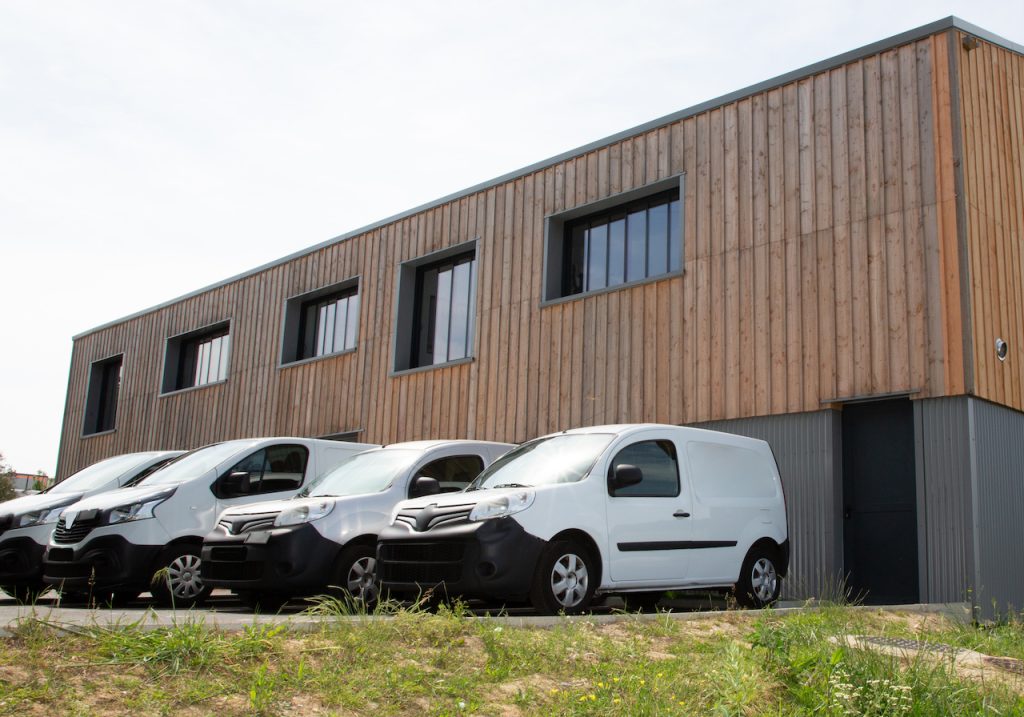A business passes through certain enterprise development stages as it slowly expands – from a scrappy startup with less than 20 employees to a franchise-like operation with multiple locations.
Each phase has its own set of key characteristics and challenges.
The first is the start–up phase, with an operation focused largely on the owner-operator and usually based on one key product or service. Growth opportunities are somewhat limited because that individual is heavily invested in the day-to-day operations.
The next is the grow-up phase, as the business moves towards having a leadership team that can reinforce company values, specialize in specific areas of the operation, and measure success with key performance indicators (KPIs).
The final phase is the scale-up with a business operating in multiple locations and a finance department providing access to low-cost capital.
Acquira's vision is to help create roll-ups of decentralized grow-ups (rather than scaleups). There is an excellent arbitrage opportunity in buying high cash-flowing start-ups and converting them to grow-ups within a year.
Let’s take a closer look at the difference between a start-up, a grow-up, and a scale-up.
First Phase: Startup Phase
- Maximum of ~15 employees per founder, with most of the employees reporting to a founder
- Lack of systems and procedure
- Many employees wear multiple hats, with the founders often wearing 3-4 different hats.
- The company is run by the founder(s), not by a leadership team
- For the above reasons, this business typically trades at 3x Adjusted EBITDA

The first phase of any new business – and the kind of business usually purchased by AEs – is a start-up. It generally focuses on a single product or service, like starting a residential plumbing business.
They are usually centered around a sole owner-operator who oversees all business aspects. As such, they are generally capped out at around 15-20 employees. It's important to note that a company can be 50 years old and still operate like a startup. Some businesses simply never move past this phase.
Like the owner-operator, employees must wear many hats to complete all the necessary tasks to operate the business successfully. Everyone is simply too busy for there to be a strong company culture.
Because that sole owner-operator is so busy with the day-to-day operation of the business, growth opportunities are often more limited.
There is also little in the way of formal job descriptions and standard operating procedures (SOPs) for key business activities.
Imagine a small plumbing company where the owner only seeks out new customers while working. He might have another crew that operates independently. He probably measures success by checking his bank account but isn’t directly measuring whether he is doing better or worse than six months ago in a detailed way.
A start-up will generally encounter several key problems as it nears the next growth phase – becoming a grow-up.
When a start-up begins, owners and employees must multi-task and excel at many jobs. However, at a certain point, hiring people with specialties in key areas, like sales, to optimize growth becomes more efficient.
The owner will generally have little time in their day to focus on long-term goals because they are busy getting their hands dirty doing the actual work of the business.
To become a grow-up, a business needs to invest in an added management layer to free the owner to start working on the business instead of in the business. To do this, they need capital – ideally provided by the business's cash flow. For this reason, it takes at least 5 years of operation before a newly formed business is ready to move from startup to grow-up.
Acquira generally focuses on buying businesses that are nearing the end of the start-up phase while they are profitable, but much of their success hinges on the owner-operator. The business already cashflows more than enough money to invest in building out the leadership team, and the succession is an ideal opportunity to do this.
Second Phase: Grow-up Phase
- Typically 50+ employees and $10M+ in revenue
- A leadership team runs day-to-day operations.
- With financial systems in place, business is run on a budget.
- Systems and procedures in place
- 7:1 ratio of manager-to-technician
- Everyone knows where the business is going, their role in getting there, and how success in that role is measured.
- Trades at 5x-10x EBITDA

The next phase is the grow-up stage, where a business has at least 50 employees and a leadership team is in place, which allows a stronger focus on growth. The business is still usually intensely local and doesn’t have multiple locations.
This leadership team oversees the business and has a clear plan for how to move forward.
There is a strong company culture where employees feel like they’re a part of a team. They can freely share ideas for growth and feel like they’re heard. The business gives them a good work-life balance.
This can help boost productivity and foster growth.
A strong company culture is more than perks like free coffee and snacks. It’s a good workplace where people are happy, so turnover is generally lower.
A grow-up can be defined as a business that has a leadership team that is consistently reinforcing five key questions:
- Why do we exist?
- How do we behave?
- Where are we going?
- What is everyone’s role in getting there?
- How does everyone measure their success?
As the business grows, it will become more formalized with specific job descriptions and key performance indicators (KPIs) to judge success.
This can help to increase efficiency and profitability.
During this phase, the leadership team optimizes customer-facing and support role processes.
“You can't do a lot of the operational optimizations until you're in a grow-up mode,” says Hayden Miyamoto, CEO and founder of Acquira.
A business in this phase is generally much more self-sufficient than a start-up. The owner-operator doesn’t have to be involved in the day-to-day operations and can instead focus on longer-term strategies along with the leadership team.
Businesses in the grow-up phase generally fetch a higher value than those in the start-up phase.
“If they're already up and running and you're buying a management team and a CEO, it's 5X,” says Hayden.
There are several programs designed to help businesses grow from this phase. For example, the Acquira Certified Enterprise (ACE) Framework is designed to take a business that is in its start-up phase and put it squarely into the grow-up phase by moving towards a management-led operation over an eight-month timeframe.
This can involve forming a strong management team, defining a vision, and creating departmental missions and KPIs for each department.
Third Phase: Scale-up Phase
- Around 250+ employees
- Operating in multiple locations
- It has a dedicated finance department.
The last phase in enterprise development is the scale-up, a centralized operation with 250+ employees operating in multiple locations.

What sets apart a grow-up business from a scale-up?:
- A finance division that gives it access to low-cost capital
- Multiple locations
- A massive investment in a company brand, often nationwide
- Sophisticated ERP and process in place to re-enforce consistency
It can take several years to transition from the grow-up phase to a scale-up.
The business's operations are highly centralized and can be a bureaucratic workplace that loses some of the scrappiness and culture of a start-up or grow-up.
The average worker has little room for innovation because processes are highly controlled. This can lead to resentment and generally unhappy workers.
“It also lowers efficiency in most of the operations,” says Hayden. “It looks more like a franchise model.”
A scale-up will also expand into associated industry areas by purchasing complementary businesses that can help increase revenue and expand product lines or services.
This can help them pick up additional employees and expand into new geographic areas.
For example, a stone countertop manufacturer could move into cabinetry and tile work by leveraging its contacts among general contractors and interior decorators.
Conclusion
There is a natural progression in enterprise development as a business moves from the start-up phase – an owner-led operation with less than 20 employees – into the grow-up phase with a dedicated management team and sometimes into a scale-up with multiple locations.
If you’re interested in becoming a small business owner, the first step is to apply for the Accelerator Program. If you’d like to learn more about how we can help you find and close a business within seven months, schedule a call with one of our representatives through the form below.
Our ACE framework is designed to move your business from an owner-led start-up to a grow-up with an effective leadership team in seven to eight months. You can check out more information here.
Are you the owner of a start-up that is transitioning into a grow-up? If so, let us know in the comments below.
Key takeaways
- Owner-led start-ups have limited growth potential
- An effective leadership team allows a business to optimize processes and growth.
- A dedicated finance department gives access to low-cost capital for expansion.
- The ACE framework is designed to move towards the grow-up phase in eight months.
Acquira specializes in seamless business succession and acquisition. We guide entrepreneurs in acquiring businesses and investing in their growth and success. Our focus is on creating a lasting, positive impact for owners, employees, and the community through each transition.



